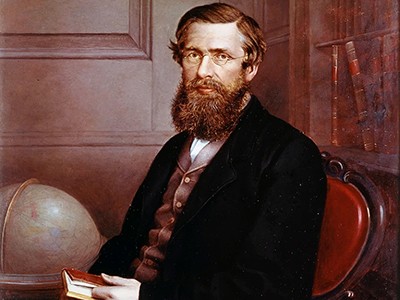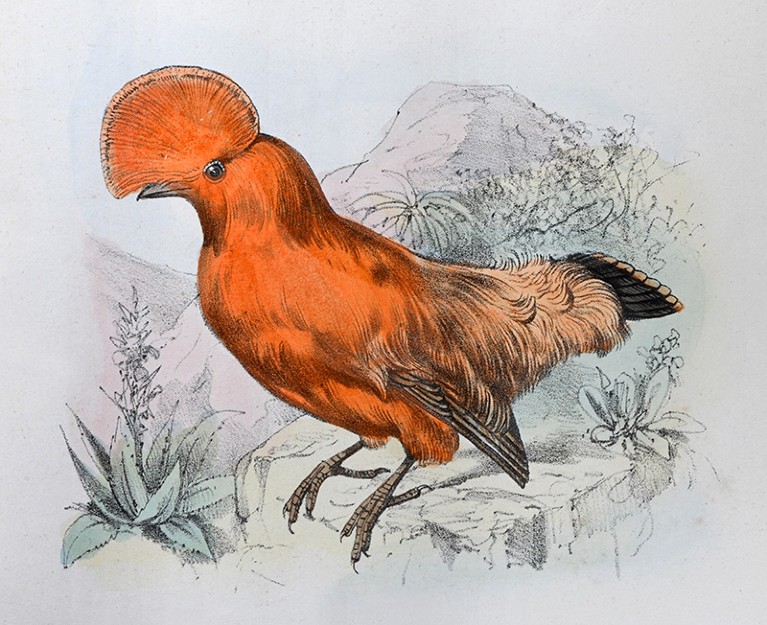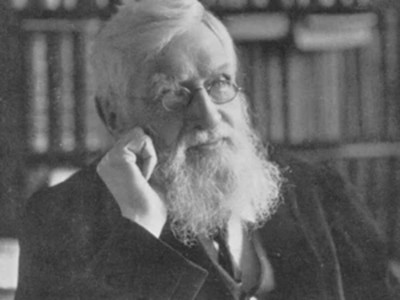
how Alfred Russel Wallace inspires Indigenous researchers
Written by on January 5, 2023
A map of the Amazon River and its tributaries, as published in Alfred Russel Wallace’s 1853 book.Credit: Mary Evans/Natural History Museum
Dzoodzo Baniwa, a member of an Indigenous community in Brazil’s Amazonas state, has been collecting data on the region’s biodiversity for around 15 years. He lives in a remote village called Canadá on the Ayari River, a tributary of the Içana, which in turn feeds the Rio Negro, one of the main branches of the Amazon. The nearest city, São Gabriel da Cachoeira, is a three-day trip by motor boat.
Dzoodzo (who goes by his Indigenous name but is also known as Juvêncio Cardoso) takes inspiration for his work from many cross-cultural sources. A perhaps unexpected one is a 170-year-old book by the British naturalist Alfred Russel Wallace, who visited the Amazon and Negro rivers on his expeditions in 1848–52. A Narrative of Travels on the Amazon and Rio Negro gives detailed accounts of the wildlife and people Wallace encountered near Dzoodzo’s home, including the Guianan cock-of-the-rock (Rupicola rupicola), a bright orange bird that Wallace describes as “magnificent … sitting amidst the gloom, shining out like a mass of brilliant flame”1.
Dzoodzo’s passion for local biodiversity is reflected in his work at Baniwa Eeno Hiepole School, an internationally praised education centre for Indigenous people. He dreams of one day turning it into a research institute and university that might increase scientific understanding of the region’s species, including R. rupicola.

Alfred Russel Wallace’s first expedition ended in flames
Wallace, who was born 200 years ago, on 8 January 1823, is best known for spurring Charles Darwin into finally publishing On the Origin of Species, after Wallace sent Darwin his own independent discovery of evolution by natural selection in 1858. Most of Wallace’s subsequent work drew on observations from his 1854–62 expeditions in southeast Asia; his earlier work in Amazonia is much less well known.
Yet there are lessons from Wallace’s time in Brazil that are especially relevant for conservationists and other scientists today — notably, what can come from paying attention to what local people say about their own territory.
Barriers and boundaries
Wallace made two key contributions that still shape thinking about Amazonia, the world’s most biodiverse region, which covers parts of Bolivia, Brazil, Colombia, Ecuador, Peru, Venezuela, Guyana, Suriname and French Guiana.
On 14 December 1852, Wallace read out his manuscript ‘On the monkeys of the Amazon’ at a meeting of the Zoological Society of London. In this study, which was later published2, Wallace relays observations that form the basis of the most debated hypothesis for how Amazonian organisms diversified: the riverine barrier hypothesis.
His paper refers to the large Amazonian rivers as spatial boundaries to the ranges of several primate species. “I soon found that the Amazon, the Rio Negro and the Madeira formed the limits beyond which certain species never passed,” he writes. Since 1852, Wallace’s observations that large rivers could act as geographical barriers that shape the distribution of species have been corroborated, criticized and debated by many. The phenomenon he described clearly holds for some groups, such as monkeys and birds3,4, but not for other groups, such as plants and insects5.
Subsequent researchers have explored whether the distribution patterns of species, such as those observed by Wallace, indicate that the evolution of the Amazonian drainage system has itself driven the diversification of species6. Work in the past few years by geologists and biologists show that this drainage system, which includes some of the largest rivers in the world, is dynamic7, and that its rearrangements lead to changes in the distribution ranges of species8. Current species ranges thus hold information about how the Amazonian landscape has changed over time.

The Guianan cock-of-the-rock (Rupicola rupicola), which Wallace likened to a “brilliant flame”.Credit: Hein Nouwens/Getty
The second crucial observation made by Wallace, also in his 1852 paper, was that the composition of species varies in different regions. He describes how “several Guiana species come up to the Rio Negro and Amazon, but do not pass them; Brazilian species on the contrary reach but do not pass the Amazon to the north. Several Ecuador species from the east of the Andes reach down into the tongue of land between the Rio Negro and Upper Amazon, but pass neither of those rivers, and others from Peru are bounded on the north by the Upper Amazon, and on the east by the Madeira.” From these observations, he concluded that “there are four districts, the Guiana, the Ecuador, the Peru and the Brazil districts, whose boundaries on one side are determined by the rivers I have mentioned.”

Evolution’s red-hot radical
Even though Amazonia is presented as a single, large, green ellipse in most world maps, it is actually a heterogeneous place, with each region and habitat type holding a distinct set of species9,10. The four districts proposed by Wallace are bounded by the region’s largest rivers: the Amazon, Negro and Madeira. But further studies of species ranges since then have revealed more districts, now called areas of endemism, some of which are also bounded by these and other large Amazonian rivers, such as the Tapajós, Xingu and Tocantins9,11.
This recognition of spatial heterogeneity in Amazonian species distributions — first accomplished by Wallace — is essential for today’s research, conservation and planning10. Each area of endemism includes species that occur only in that area. And different areas of endemism are affected differently by anthropogenic impacts, such as deforestation, fires and development10. More than half of Amazonia is now within federal or state reserves or Indigenous lands — territories that are recognized by current governments as belonging to Indigenous people. But nearly half of the region’s areas of endemism are located in the south of the region, close to the agricultural frontier, and the species they contain are severely threatened by habitat loss10 (see also www.raisg.org/en).
Local knowledge
Although Wallace’s writings indicate that in many ways he admired most of the Indigenous people he met, especially those from the upper Rio Negro basin, he still viewed Indigenous people through the European colonial lens of his time. In A Narrative of Travels on the Amazon and Rio Negro1, Wallace describes the Indigenous communities he encountered as “in an equally low state of civilization” — albeit seemingly “capable of being formed, by education and good government, into a peaceable and civilized community”.
Yet he did better than many of his contemporaries when it came to respecting local knowledge. In his 1852 paper, for example, Wallace notes that his fellow European naturalists often give vague information about the locality of their collected specimens, and fail to specify such localities in relation to river margins. By contrast, he writes, the “native hunters are perfectly acquainted” with the impact of rivers on the distribution of species, “and always cross over the river when they want to procure particular animals, which are found even on the river’s bank on one side, but never by any chance on the other.” Likewise, in his 1853 book1, Wallace frequently corroborates his findings with information he has obtained from Indigenous people — for example, about the habitat preferences of umbrellabirds (Cephalopterus ornatus) or of “cow-fish” (manatees; Trichechus inunguis).
Considering the vastness and complexity of Amazonia, it is hard to see how Wallace could have gained the insights he did after working in the region for only four years, had he not paid close attention to local knowledge.

The other beetle-hunter
Amazonian Indigenous peoples have had to endure invasion of their lands, enslavement, violence from invaders and the imposition of other languages and cultures. Despite this, numerous Indigenous researchers wish to expand their knowledge about Amazonia by combining Indigenous and European world views. Meanwhile, a better understanding of how the Amazonian socio-ecological system is organized, and how it is being affected by climate change and local and regional impacts12, hinges on the ability of researchers worldwide to learn from and to be led by Indigenous scientists.
The 98 Indigenous lands in the Rio Negro basin cover more than 33 million hectares (see go.nature.com/3wkkftu). If the hopes of Dzoodzo and others to build a research institute and university for the region are met, school students will no longer have to leave their homeland to pursue higher education. The community would have a way to document its own knowledge and that of its ancestors in a more systematic way. And the legitimization of Indigenous people’s research efforts in the legal and academic frameworks recognized by non-Indigenous scientists — such as through the awarding of degrees — would make it easier for Indigenous researchers to partner with other organizations, both nationally and internationally.
Indigenous people in the Rio Negro basin today are no longer objects of observation — they have taken charge of their own research using tools from different cultures. Indeed, Dzoodzo is turning to Wallace’s writings, in part, to learn more about how his own ancestors lived.
Perhaps the thread between Wallace and Dzoodzo, spanning so many years and such disparate cultures, could seed new kinds of partnership in which learning is reciprocal and for the benefit of all.
watch avatar the way of water full movie
watch avatar the way of water full movie
watch avatar the way of water full movie






